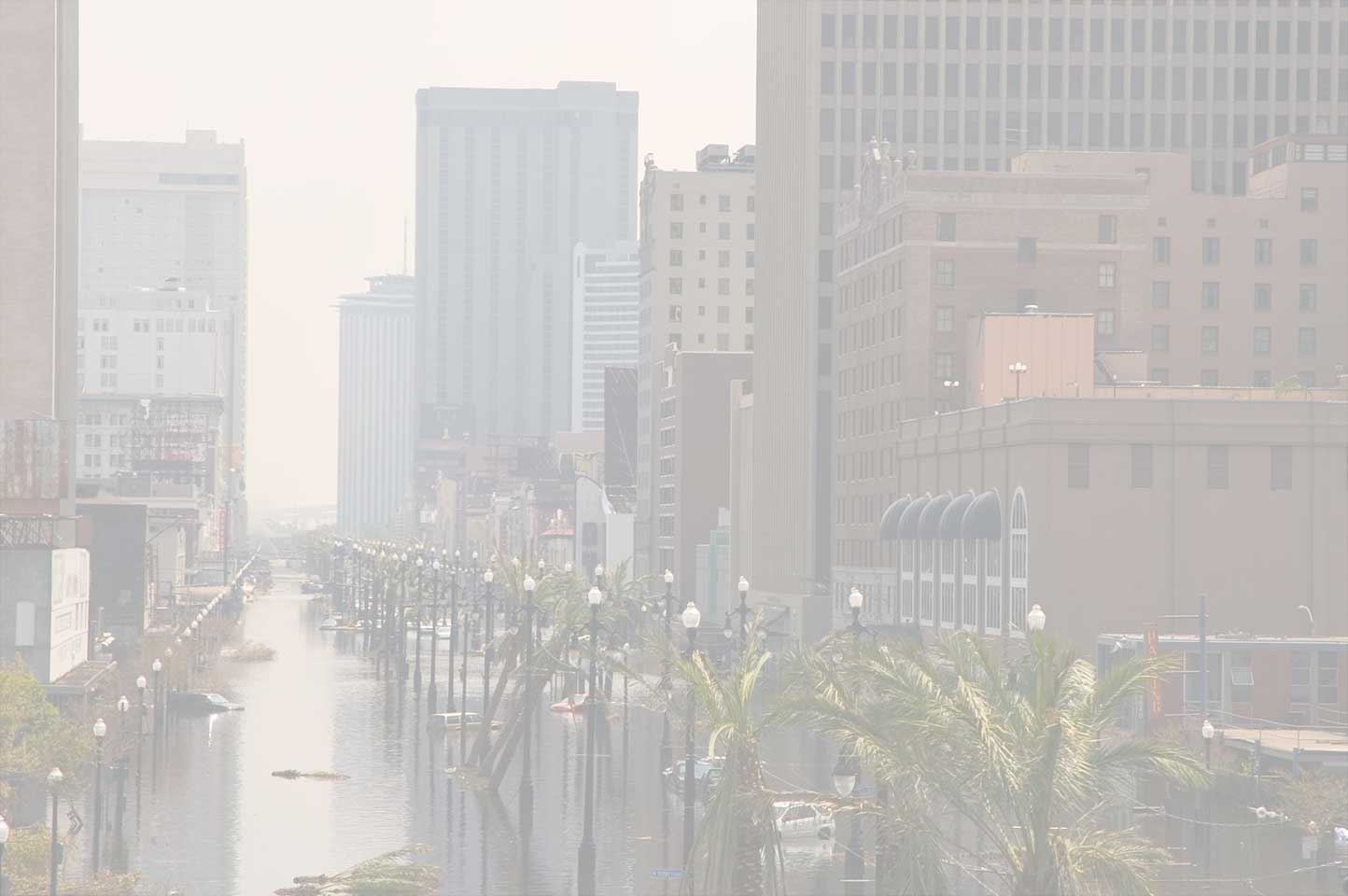Katrina Impact:
Facts About: Katrina from www.datacenterresearch.org.
As of Aug. 27, 2015
Flooding. When the levees protecting New Orleans failed in August 2005, approximately 80 percent of the city flooded. The business district and main tourist centers were relatively undamaged, but vast expanses of many New Orleans neighborhoods were inundated, making Katrina the largest residential disaster in U.S. history. The extent of damage varied greatly from one part of town to another. Some areas received one foot of flooding while others were submerged by more than 10 feet of water.
Deaths. Hurricane Katrina and the levee failures resulted in the deaths of at least 986 Louisiana residents. The major causes of death include: drowning (40%), injury and trauma (25%), and heart conditions (11%). Nearly half of all victims were over the age of 74.
Displaced residents. The storm displaced more than one million people in the Gulf Coast region. Many people returned home within days, but up to 600,000 households were still displaced a month later. At their peak, hurricane evacuee shelters housed 273,000 people, and later, FEMA trailers housed at least 114,000 households.
Population decrease. The population of New Orleans fell from 484,674 before Katrina (April 2000) to an estimated 230,172 after Katrina (July 2006) — a decrease of 254,502 people and a loss of more than half of the city’s population.(1) By July 2014, the population was back up to 384,320 — 79% of what it was in 2000.
Housing damage. Katrina damaged more than 1 million housing units in the Gulf Coast region. About half of these damaged units were located in Louisiana. In New Orleans alone, 134,000 housing units — 70 percent of all occupied units — suffered damage from Hurricane Katrina and the subsequent flooding.
Total damages. The total damages from Hurricanes Katrina and Rita were $150 billion — $135 billion from Katrina and $15 billion from Rita.(2)
Recovery funding. Of the $120.5 billion in federal spending, the majority — approximately $75 billion — went to emergency relief, not rebuilding. Philanthropic giving, while more than double the giving for either the 2004 South Asian Tsunami or 9/11, was only $6.5 billion. Meanwhile, private insurance claims covered less than $30 billion of the losses.


